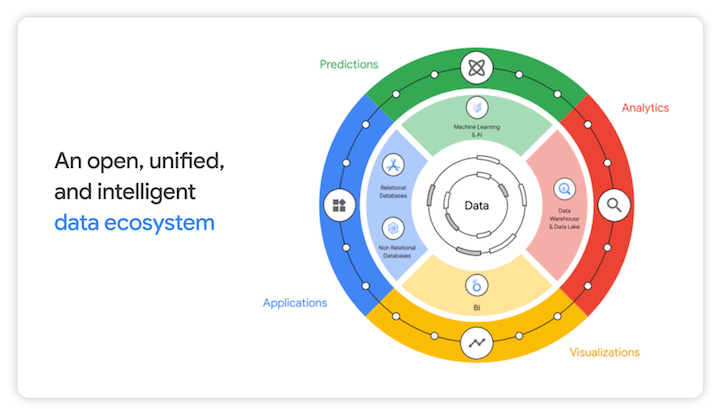AHA is asking Congress to release remaining provider relief funds

Photograph: Xavierarnau/Getty Visuals
The American Clinic Affiliation wishes Congressional motion to distribute the remaining provider reduction funds and to consider other measures to enable alleviate the economical strain triggered by COVID-19.
No provider relief money from American Rescue Program have been released to handle the Delta and Omicron variants, even with steep increases in hospitalizations and deaths, AHA Executive Vice President Stacey Hughes stated in a January 20 letter to Household and Senate leaders.
“We request that Congress urge the Administration to instantly distribute and account for the remaining resources in the PRF, which include extending the deadline for paying out funds and allowing for the resources to be used for charges connected with extra protection measures and schooling to permit each of our nation’s hospitals to triumph over its special challenges,” Hughes mentioned. “Also, we request that Congress supply additional PRF pounds in the amount of money of $25 billion to health care companies who keep on to have missing revenues and increased expenses owing to the remarkable monetary strain that the delta and omicron variant are triggering.”
The City Institute believed in October 2021 that $26.8 billion remained in supplier relief funding.
The AHA and hospital leaders are keeping a press simply call at 9 a.m. Tuesday, January 25, to discuss the surge in caseloads and hospitalizations spurred by the variants, and also workforce problems the group stated has reached the amount of a national unexpected emergency.
Scheduled to be on the get in touch with are AHA President and CEO Rick Pollack Robyn Begley, senior vice president and main nursing officer of the AHA Wright Lassiter, president and CEO of the Henry Ford Health and fitness Technique, Detroit, who is the 2022 chair of the AHA Board of Trustees Bruce Flanz, president and CEO, MediSys Health Network, Queens, New York and Ruby Kirby, CEO, West Tennessee Health care Bolivar and Camden Hospitals.
WHY THIS Issues
Hughes claimed, “The pandemic has place intense money stress on hospitals, such as, but not limited to: larger charges for labor, drugs and provides the astronomical prices of getting ready for a surge of COVID-19 people months of critical healthcare facility revenue becoming erased owing to the blend of a forced shutdown and slowdown of normal functions for non-emergent care and the superior cost of managing COVID-19 cases, which have a tendency to be very resource intense.
“The deficiency of PRF bucks to address issues wrought by the delta and omicron surges has left quite a few hospitals going through overpowering money and operational difficulties. Compounding this issue has been uncertainty and confusion all-around the federal guidelines for earlier allotted PRF funding that have hindered quite a few suppliers from working with the money inside the allotted timeframes.”
Through the previous two yrs, hospitals and overall health techniques have relied on provider relief fund bucks and the short-term elimination of Medicare sequester cuts and other provisions that the AHA needs to see ongoing.
“In addition to these continuing wants, we now have to have supplemental guidance to bolster our pressured and strained workforce,” Hughes said in the letter to Senate Greater part Chief Chuck Schumer, Senate Minority Leader Mitch McConnell, Dwelling Speaker Nancy Pelosi and House Minority Chief Kevin McCarthy.
WHAT THE AHA Wants
The AHA wants Medicare sequester relief to be prolonged until eventually the stop of the COVID-19 community health and fitness crisis or Dec. 31, 2022, whichever is later on. In December, Congress postponed the imminent 2% Medicare cuts to hospitals and doctors right up until April 2022, and then lowered the lower to 1% for an added a few months.
The AHA desires Congress to suspend Accelerated and Progress repayments for six months and let for recoupment immediately after the compensation suspension at 25% of Medicare statements payments for the subsequent 12 months. In March 2020, both the Facilities for Medicare and Medicaid Services and Congress produced variations to the existing Accelerated and Advance Payments Applications to offer added positive aspects and flexibilities thanks to the COVID-19 pandemic. Subsequently, Congress amended the reimbursement conditions for providers and suppliers.
“These payments have served as a critical lifeline to hospitals and health methods, supplying very important funding to aid the front-line heroes dealing with individuals, make new sites of care to lower the distribute of the virus, and buy the ventilators, medication and supplies to treatment for the critically sick,” Hughes explained. “Nevertheless, the requirement to repay these money places hospitals and health and fitness programs back in fiscal jeopardy while they perform to recover from this unparalleled pandemic.”
The AHA also needs Congress to be certain that hospitals collaborating in the 340B method who could have expert improvements to their disproportionate share healthcare facility adjustment share in fiscal a long time 2020 or 2021 thanks to the COVID-19 pandemic, are capable to retain their 340B eligibility. The COVID-19 pandemic has altered hospitals’ payer mix, which for some hospitals quickly reduced their DSH proportion, the AHA said. This has threatened the potential of some hospitals to manage their eligibility for the 340B Drug Pricing Program.
THE Much larger Pattern
At the outset of the pandemic, Congress recognized a Provider Relief Fund to assistance health care providers mitigate their monetary losses.
Provider aid funds of $178 billion have been allotted to all providers and an additional $8.5 billion has been focused for rural suppliers. The money were being disbursed via a number of tranches and targeted payments with stringent guardrails as to how and in what timeframe they could be utilized, Hughes explained.
In May perhaps 2021, the AHA urged the Office of Health and fitness and Human Services to distribute remaining company reduction funds.
As of Jan. 13, 2022, the typical number of everyday COVID-19 medical center inpatients had amplified 35% in comparison to the prior week, the AHA mentioned. The typical variety of day-to-day grownup intensive care unit COVID-19 patients amplified 21%.
To day, there have been additional than 65 million instances of COVID-19 in the U.S. and much more than 850,000 deaths, the AHA explained.
Very last 7 days, Dr. Anthony Fauci, main health care advisor to the president, stated that Omicron is likely to peak in most states by mid-February.
Twitter: @SusanJMorse
Electronic mail the author: [email protected]






